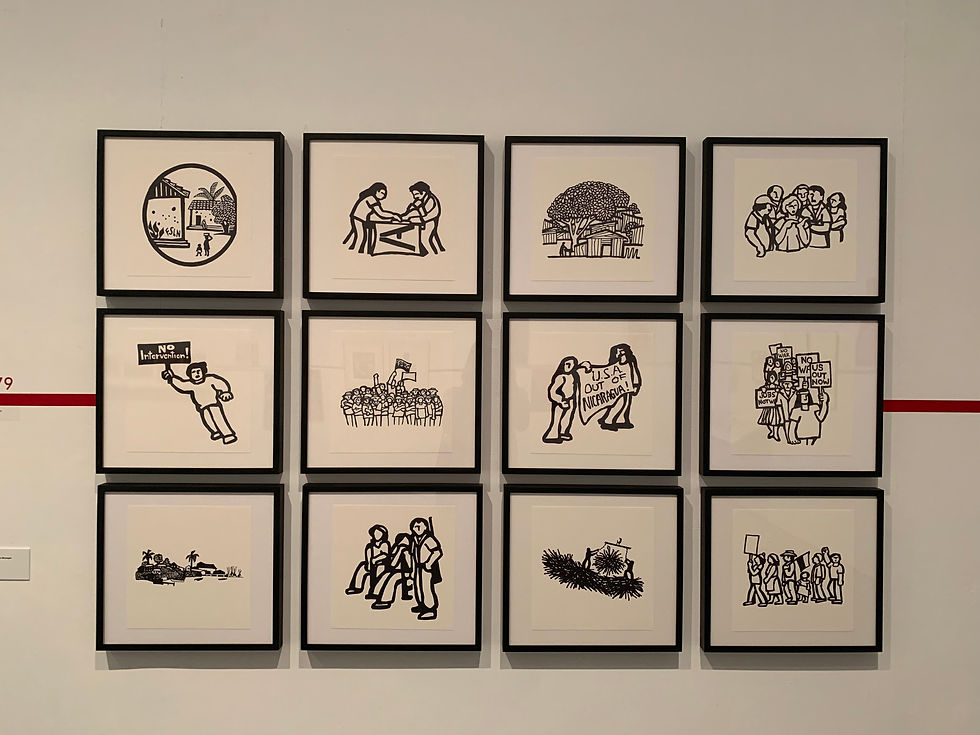A letter from Madrid
- Caroline

- Jul 17, 2022
- 4 min read
My pandemic-rescheduled trip to Madrid took place last month. It was my first time in the city and will certainly not be the last. Here’s a few highlights from the city’s incredible art collections – the Prado, Reina Sofia and Thyssen-Bornemisza and an unanticipated connection to my research on Walpole’s art collection.
Thyssen-Bornemisza
Bearing the name of the family who formed the collection over three generations, the Thyssen-Bornemisza is the newest of the three museums in Madrid’s Golden Triangle. The collection contains paintings and sculpture from the 13th to the 20th century, but it’s the ground floor that showcases Carmen Thyssen’s collection that really stands out in my memory – particularly the Impressionist paintings and colourful German Expressionist works. I’ve seen Impressionist works before and there are some beautiful pieces by Degas, Sisley and Monet, amongst others, to admire. German Expressionism though was rather new to me - it was the first time I’ve seen work by Erich Heckel and also Wassily Kandinsky in person. As a magpie for colour, I loved Heckel’s House in Dangast and Kandinsky’s Ludwigskirche in Munich (both below). The gallery is free on Monday afternoons to visit and I would highly recommend it.


(photos taken by me in the gallery)
The Prado
Where to begin! The Prado is both a museum/gallery you won’t forget and one you are unlikely to finish – it’s huge and wherever you turn there are iconic works peering down at you. Just a few of the headliners: The Garden of Earthly Delights Triptych by Bosch; Emperor Charles V at Mulhberg by Titian; Judith at the Banquet by Rembrandt; The Immaculate Conception by Murillo and Las Meninas by Velazquez. The Prado does not allow any photography which is both irritating and refreshing – there’s no one blocking a painting with an iPhone and every visitor is forced to really look. In Veronese’s Christ among the Doctors, my eyes were drawn to Christ moments before my audio guide pointed out that he is the focal point of the painting. Similarly, Rubens Adoration of the Magi contains main influences from the Italian school – the muscular bodies of the slaves (Michelangelo), the use of light (Caravaggio), the Venetian colours and the composition. The work was repainted by Rubens later in life and he enlarged the canvas, including himself as a self-portrait.
The more I walked slowly around the gallery, ear glued to my audio guide, I was faced with painting after painting that had cropped up in my university education. Murillo, an artist loved by Robert Walpole and a focal point of my own research, was suddenly staring down at me. For an intimidatingly large and well stocked gallery, there are plenty of spaces designed for more intimate moments like this one. I even learned something new, that the Immaculate Conception was a theological point authorised first (and for many years) only in Seville. This is a subject Murillo painted several times and was included in Walpole’s collection, although at the time it was likely known as the Assumption of the Virgin.
My favourite painting of the day though has to be Van Dyck’s portrait of the painter, Martin Ryckaert. There’s such a softness to it that reminded me of Rembrandt’s portraits, which I also adore. Martin only had one arm and he’s dressed in Polish clothing, the blue hat contrasting with his red tunic, but its his face that draws you in. There’s a serenity in the painting and it was so peaceful to stand in front of, while the rest of the gallery buzzed around me.

There’s truly something for everyone in the Prado, and for any art fan it’s a must see.
(photo courtesy of Prado's website)
Reina Sofia
Last and probably least (sorry) is the Reina Sofia. A colossal gallery, occupying a former hospital and with seemingly endless rooms, the Reina Sofia is another gallery you are unlikely to finish and one I struggled to make sense of. There are some bizarre exhibits and really not much hand holding – a better map and more informative labels would have been helpful! That being said, there’s some knockout pieces like Miro’s ballet dancer, Angeles Santos’ A world and Picasso’s Guernica. Having visited the Picasso museum a few weeks prior in Paris, I had a newfound appreciation for the Guernica, it’s physical size and scale of ambition, and the intensity of emotion experienced by the faces in painting. Guernica was a town in northern Spain, bombed by the fascist powers of Germany and Italy in 1937. A key moment in the Spanish civil war, Guernica as a painting was a cultural critique of the violence and the Spanish Nationalists.
Outside of the permanent collections, the Reina Sofia has curated some fascinating exhibitions – both on site and in their offshoot locations in the Buen Retiro park. Their Graphic Turn. Like the Ivy on a Wall is an exploration of the role graphic art has played in protest and resistance in Latin America, with counter cartographies of genocide and exploitation, and protest prints against US involvement in Nicaragua particularly standing out to me.
Worth a visit but prepare to be confused and lost, and I would spend more time in the Prado and less here if you need to prioritise.

(photo taken by me in the gallery)




Comments